New York/LES
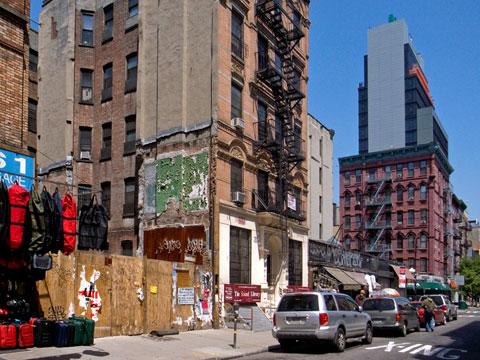
Orchard Street (digital)
After shooting a building for a client in Midtown in the morning, I spent several hours with the view camera on the Lower East Side. I returned to a spot on Orchard Street that I had looked at previously without my camera, and set up a view with tenements and a new rather alien tower in the background. I realized later, that the tenement in the foreground, stripped of its stoop, is the location of a photograph I did in 1980.
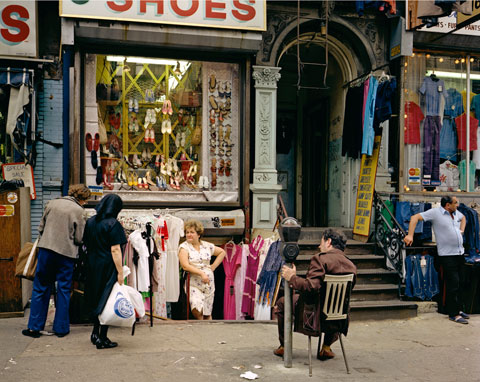
Orchard Street, 1980 (4x5 film)
Orchard Street, while still full of shops, and generally much fixed up over 1980, is less vibrant than it once was. Back then, it was an intense island of commerce in the midst of an often scary neighborhood. Although, the street is still closed off to cars on Sundays, the street hawkers and those protecting the goods displayed on the sidewalk can be intimidating rather than inviting. At the same time, clubs, bars, and more fashionable shops are gradually pushing out the discount trade.
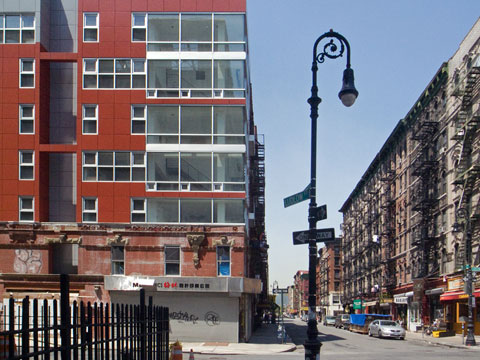
Ludlow Street (digital)
Nearby on Ludlow, opposite one of the most characteristic blocks of tenements on the Lower East Side, a new building rises on the base of an older structure. In this area, near the Tenement Museum, the city has placed historic bishop's crook light fixtures.
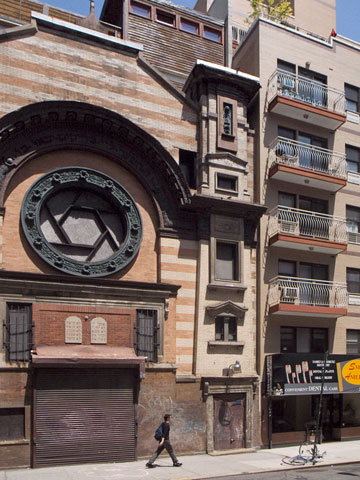
Rivington Street (digital)
On Rivington, I photographed a synagogue that has been converted to housing. This has happened all over the neighborhood. Though some have remained synagogues, others have been reconsecrated as churches.
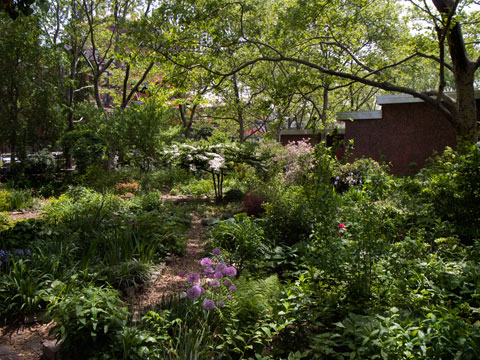
M'Finda Kalunga Garden between Rivington and Delancey (digital)
I ended my walk at the M'Finda Kalunga Garden in Sarah D. Roosevelt Park between Rivington And Delancey Streets. I saw that my former building neighbor Bob Humber was inside the garden--he's a regular volunteer there--and he let me inside the gate. This garden was established in 1983, which makes it one of the oldest community gardens on the Lower East Side.
On the fence of the garden is an information sign stating that the adjacent playground was formerly the location of New York's African burial ground.
Dutch colonists brought the first Africans to the New Amsterdam colony in the late 1500s. By 1748, African-Americans, slave and free, made up 20% of the city's population. In addition to being banned from membership in churches, at best relegated to balconies and back pews, New York black residents endured curfews meeting prohibitions, and burial restrictions.
The graveyard was disinterred in the mid 19th century, and like most of the Lower East Side, tenements rose on the site. The tenements were eventually demolished, and a one block wide park was constructed from Houston Street down to Canal Street. In 1980 it was a fearful strip, entered by few but drug dealers and addicts. Today, it is an intensely used series of playgrounds with the M'Finda Kaunga garden as the only quiet oasis.

0 Comments:
Post a Comment
Links to this post:
Create a Link
<< Home